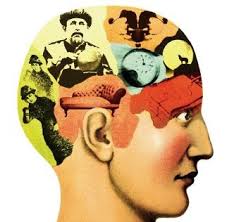Paraphilic disorders are sexual identities that go beyond the norm. The word “paraphilia” comes from two Greek words that mean “outside of or beside normal.” However, there is treatment available for these conditions! In this post, we will discuss what paraphilic disorders are and their types. We will also go over common treatments for these types of disorders as well as talk to a professional before you start any type of treatment.
Contents
What Is Paraphilic Disorders?
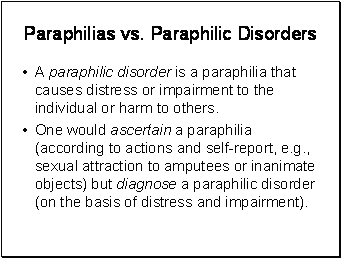
Paraphilic disorders are sexual mental health conditions that have to do with extreme or unusual sexual fantasies, urges, and behaviors. These disorders can be hard to diagnose because the symptoms vary so much from person to person. Paraphilic disorders, also known as paraphilias, are mental illnesses in which people have intense and persistent sexual urges.
It involves things like non-consenting adults, children, animals, objects, or situations that cause physical pain to others. Thus, people with the paraphilic disorder may act on their urges by themselves (like masturbating) or they may want to act out their urges with a partner (like spanking).
NOTE: Paraphilic disorders are typically discussed in the context of sexual behavior. But they can also be used to define any disorder or mental illness that is characterized by an unusual focus on a particular object, body part, or type of activity. The DSM-5’s definition for paraphilia is “any intense and persistent sexual interest other than normal sexuality.”
Who Identified Paraphilic Disorder?
Richard von Krafft-Ebing was the first person to identify the paraphilic disorder in his 1886 book, Psychopathia Sexualis.
Symptoms Of The Paraphilic Disorder
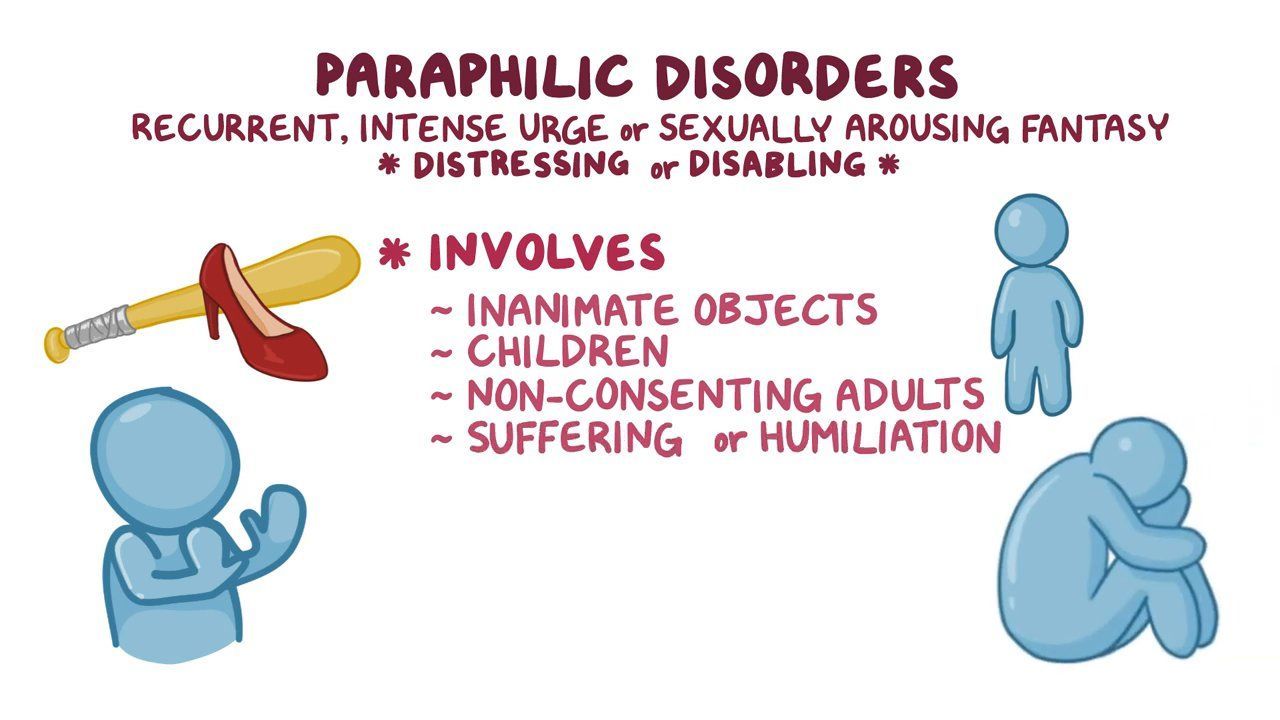
The symptoms of a paraphilic disorder vary depending on the type that is being diagnosed. However, there are some common traits for these disorders that are:
- Intense thoughts related to sex or sexual fantasies,
- Repeated objectification of people, animals, or objects,
- The compulsive need to engage in offensive sexual behavior.
Types Of Paraphilic Disorder
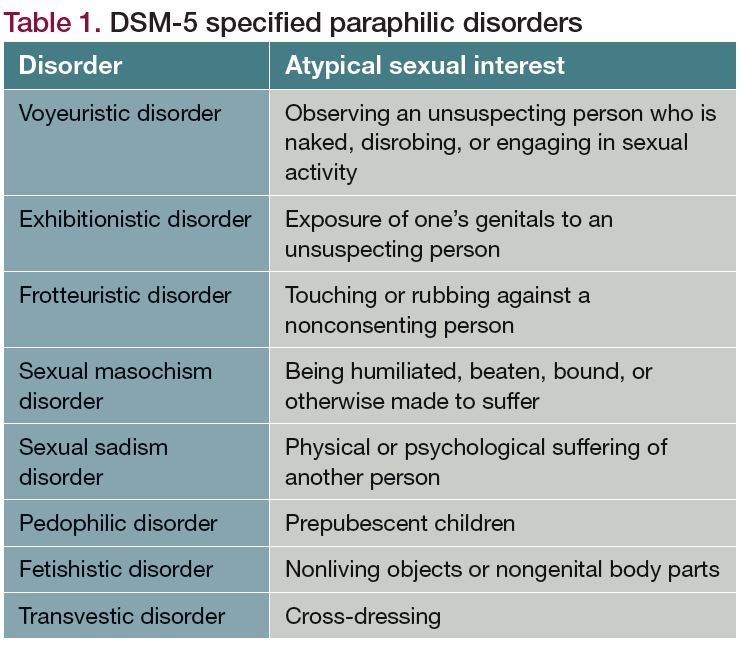
Paraphilic disorders are sexual interests that involve unusual or atypical partners, objects, or situations. These include:
- Exhibitionism (masturbating in front of an unsuspecting stranger),
- Sexual masochism (getting hurt during sex),
- Fetishism (rubbing oneself with a nonsexual object),
- Sadomasochism (painful punishment with consent),
- Frotteurism (rubbing against non-consenting people),
- Pedophilia (sexual attraction to children),
- Necrophilia (sexual attraction to corpses),
- Bestiality (sex with animals),
- Voyeurism (watching an unsuspecting/non-consenting individual who is either nude, disrobing, or engaging in sexual activity),
- Transvestism (cross-dressing that is sexually arousing and interferes with functioning)
NOTE: Many people think that paraphilic disorder is the same as sex addiction, but this isn’t true. Paraphilias are sexual fantasies and urge that cause distress or interfere with daily life. They may involve intense urges to engage in dangerous, illegal, rare, or socially unacceptable activities. These desires may be acted on with consenting adults who understand the risks involved.
Causes Of Paraphilic Disorder
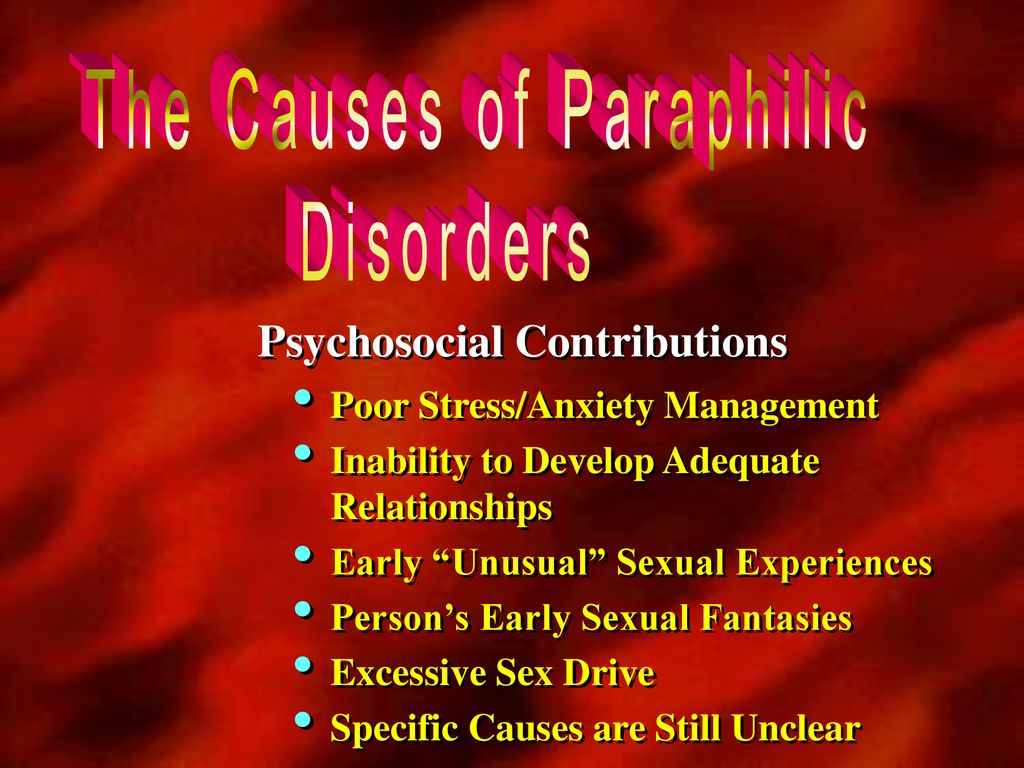
- Paraphilic disorders can be caused by biological factors such as genetics and hormones, but they may also be the result of psychological trauma.
- In addition, brain injury, hormonal imbalance, and social factors such as education and upbringing also have some say in the incidence of this disorder.
NOTE: There is no cure for paraphilias though there are treatments available to help control them.
Treatment Options For The Paraphilic Disorder
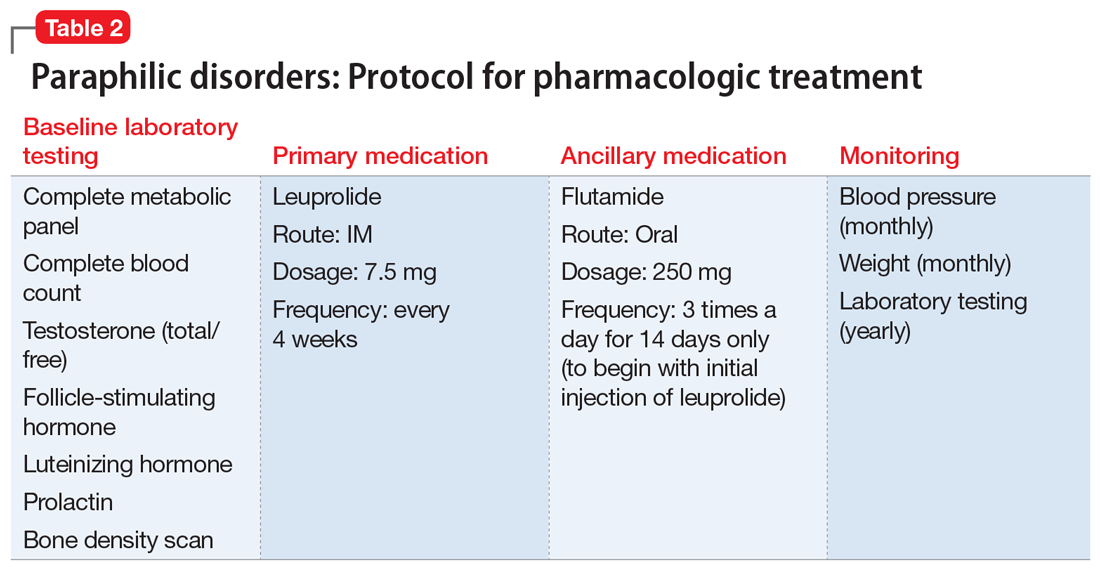
There are many treatment options for paraphilic disorder.
Psychotherapy
This type of therapy is used to help the patient identify and change their thoughts about sex or other related behavior. It could also include changing behaviors or ways one might react when they feel aroused by certain stimuli (e.g., watching someone). The therapist would work with the patient on how to control these responses so it doesn’t interfere with their life outside of therapy sessions.
Cognitive Behavior Therapy
This type of therapy is similar to psychotherapy, but it also includes homework assignments and tasks that the patient will need to complete between sessions. The therapist may also ask the patient to keep a diary of their thoughts and feelings related to sex.
Desensitization
It is a type of psychotherapy that has been around since the late 1800s to help people with all sorts of behavioral problems. It’s not uncommon for therapists to use this technique when treating disorders like pedophilia or exhibitionism, which are both are under the category of paraphilia disorders in DSM-5.
SSRIs (selective serotonin reuptake inhibitors)
SSRIs (selective serotonin reuptake inhibitors) are also a common prescription for those who suffer from the paraphilic disorder.
NOTE: Both forms of therapy together provide the best possible outcome for the patient.
Talking To a Professional

If you suffer from this disorder and need help dealing with your symptoms please don’t hesitate to talk to a professional! You must seek professional help immediately to ensure that your condition does not worsen. The earlier treatment begins, the better chance one has of overcoming these debilitating conditions.
Conclusion
If you or a loved one suffers from paraphilic disorders, please contact your doctor immediately. There is no need to suffer in silence and the earlier someone gets help, the better chance there is of overcoming these conditions!
If you are looking for affordable Online Counseling MantraCare can help: Book a trial therapy session
